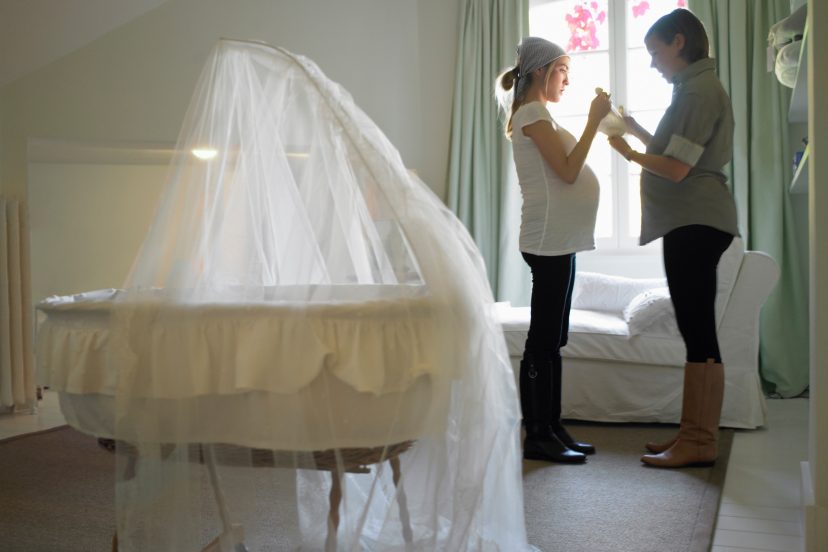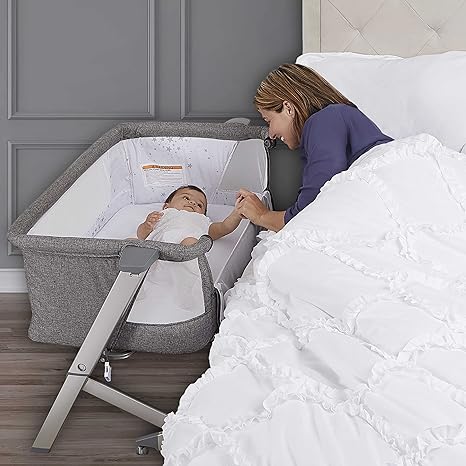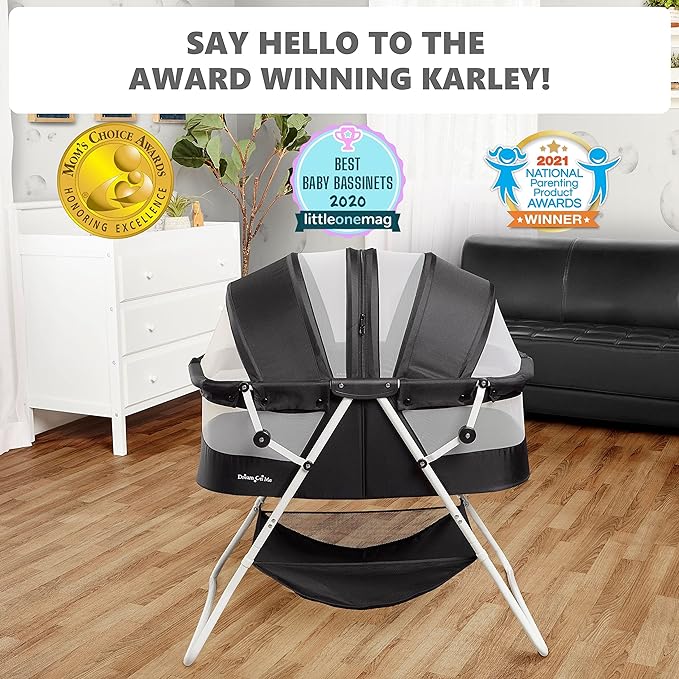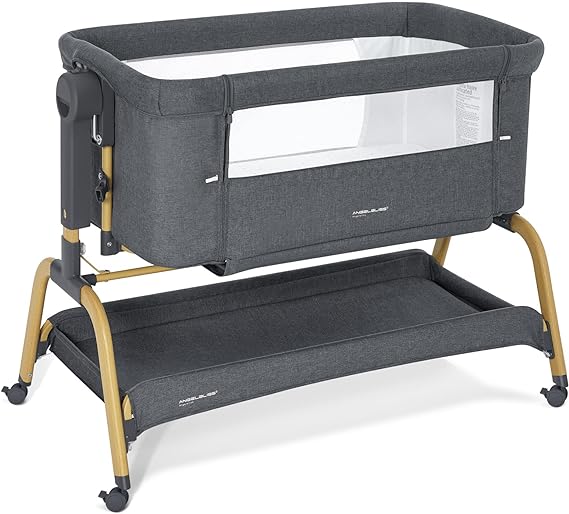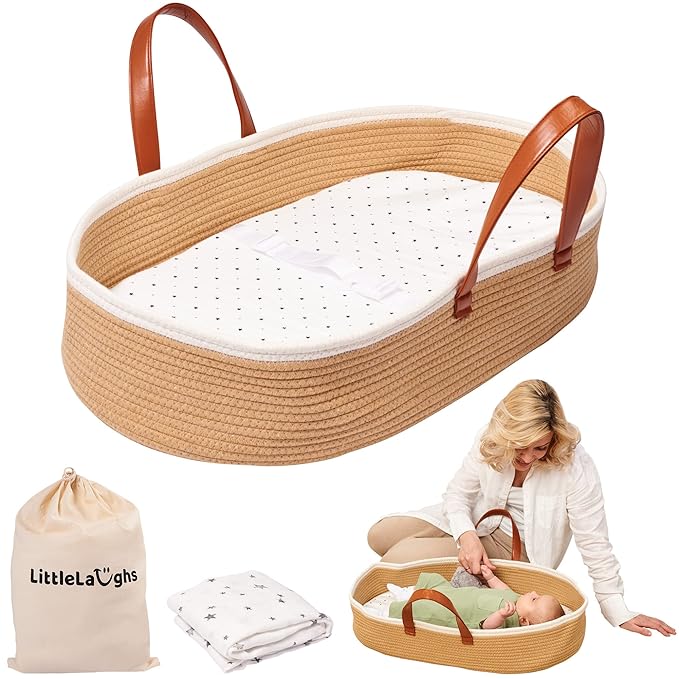Bassinet Guide for New Parents
As a new parent, one of the most important decisions you’ll make is where your baby will sleep. A bassinet can be a great choice for parents who want their baby close by, but also want the option of moving it from room to room. In this article, I’ll be providing helpful suggestions and reasons for why a bassinet may be the best choice for your baby’s sleeping needs.
What is a Bassinet?
A bassinet is a small, portable bed designed for infants from birth until they can sit up, roll over, or push up on their hands and knees. It is typically smaller than a crib, making it easier to move around and fit into small spaces. They come in a variety of styles and designs, from traditional woven baskets to modern, sleek models with advanced features.
Types of Bassinets
There are several different types of bassinets available, each with their own unique features and benefits. Some popular types include:
Co-Sleeper Bassinets: These are designed to be placed to the side of the parents’ bed, allowing the baby to sleep right next to them.
This type is a great option for parents who want to keep their baby close at night, but still want them to have their own safe sleeping space.
Portable Bassinets: Lightweight and easy to move from room to room, these are a great option for parents who want to keep their baby close during the day, but don’t want to have to move a heavy piece of furniture around.
Rocking Bassinets: These types have a gentle rocking motion that can help soothe a fussy baby to sleep. They are a popular choice for parents who want to help their baby sleep without having to resort to using a swing or other electronic device.
Moses Baskets: Moses baskets are small, portable cribs that are typically made of woven materials such as wicker or rattan.
They are a great option for parents who want a classic, traditional look for their baby’s sleeping space. They are commonly used as changing mats.
Features to Look for in a Bassinet
When choosing a bassinet, there are several features to look for to ensure that you are getting a safe and comfortable sleeping space for your baby. Some of the main features to consider include:
Portability: Consider a bassinet that is lightweight and easy to move around the house. Portability allows you to keep your baby close by, whether you’re in the living room, bedroom, or on the go.
Breathability: Opt for a bassinet with breathable mesh sides or panels. This feature promotes air circulation and reduces the risk of suffocation, ensuring a safe sleep environment for your little one.

Adjustable Height: Some bassinets offer adjustable height settings, allowing you to position the bassinet at a comfortable level for easy access and to accommodate various bed heights.
Storage Space: Look for a bassinet with additional storage features like pockets or shelves. This can be useful for keeping essentials such as diapers, wipes, and extra bedding conveniently close at hand.
Rocking or Swinging Motion: Certain bassinets offer gentle rocking or swinging motions, which can help soothe and lull your baby to sleep. This feature can be particularly helpful for calming fussy infants
Canopy or Shade: A bassinet with a canopy or shade can provide a cozy and shaded environment, shielding your baby from direct sunlight or bright lights, allowing for better sleep and relaxation.
Conversion Options: Some bassinets can convert into a crib, playard, or changing table, providing long-term value and versatility as your baby grows.
Safety Considerations
Safety should always be your top priority when choosing a bassinet for your baby. Below are some of the main safety considerations for you to think about:
- Look for one that meets the safety standards set by the Consumer Product Safety Commission (CPSC).
- Make sure the bassinet has a firm, flat mattress that fits snugly in the bassinet frame.
- Choose one with a sturdy base that won’t tip over easily.
- Avoid bassinets with soft bedding, pillows, or toys that can increase the risk of suffocation.
- Check the weight limit of the bassinet to ensure it can support your baby’s weight.

Final Words From Me
Choosing the right bassinet for your baby is a crucial decision. By considering important features such as safety, portability, breathability, adjustable height, storage, rocking/swinging motion, ease of cleaning, canopy/shade, and conversion options, you can find one that suits your needs and provides a safe and comfortable sleeping environment for your little one.
Take the time to research and compare different options, keeping in mind your lifestyle, budget, and the specific needs of your baby. With careful consideration, you can make an informed choice and provide your baby with a cozy and secure place to rest and sleep during those precious early months.
FAQ’s
Q: When should I start using a bassinet for my newborn? A: It is safe to use right from birth. Many parents choose to have their newborns sleep in a bassinet in their room for the first few months before transitioning to a crib.
Q: Is a bassinet safe for overnight sleep? A: Yes. They are designed specifically for safe sleep are suitable for overnight use. Look for bassinets that meet safety standards, have a firm mattress, and breathable sides to ensure a safe sleeping environment.
Q: How long can my baby use a bassinet? A: The usage time can vary depending on the model and your baby’s growth. Some bassinets have weight or size limitations, while others are designed to accommodate infants up to around 6 months or until they can push up on their hands and knees.
Q: Can I use a bassinet for daytime naps? A: Yes, bassinets are suitable for daytime naps. Their compact size and portability make them convenient for keeping your baby close by during daytime rest periods.
Q: Is it safe to use accessories like pillows or stuffed animals in a bassinet? A: No, it is recommended to keep the sleeping area free of pillows, blankets, stuffed animals, or any loose bedding. These items can pose suffocation hazards and increase the risk of Sudden Infant Death Syndrome (SIDS).

